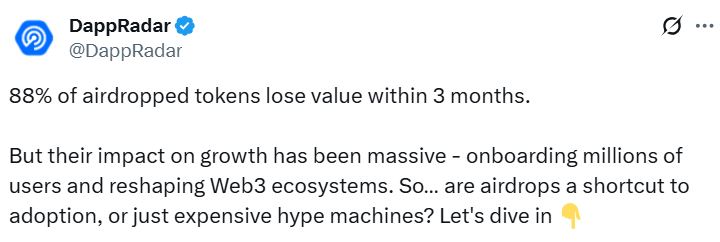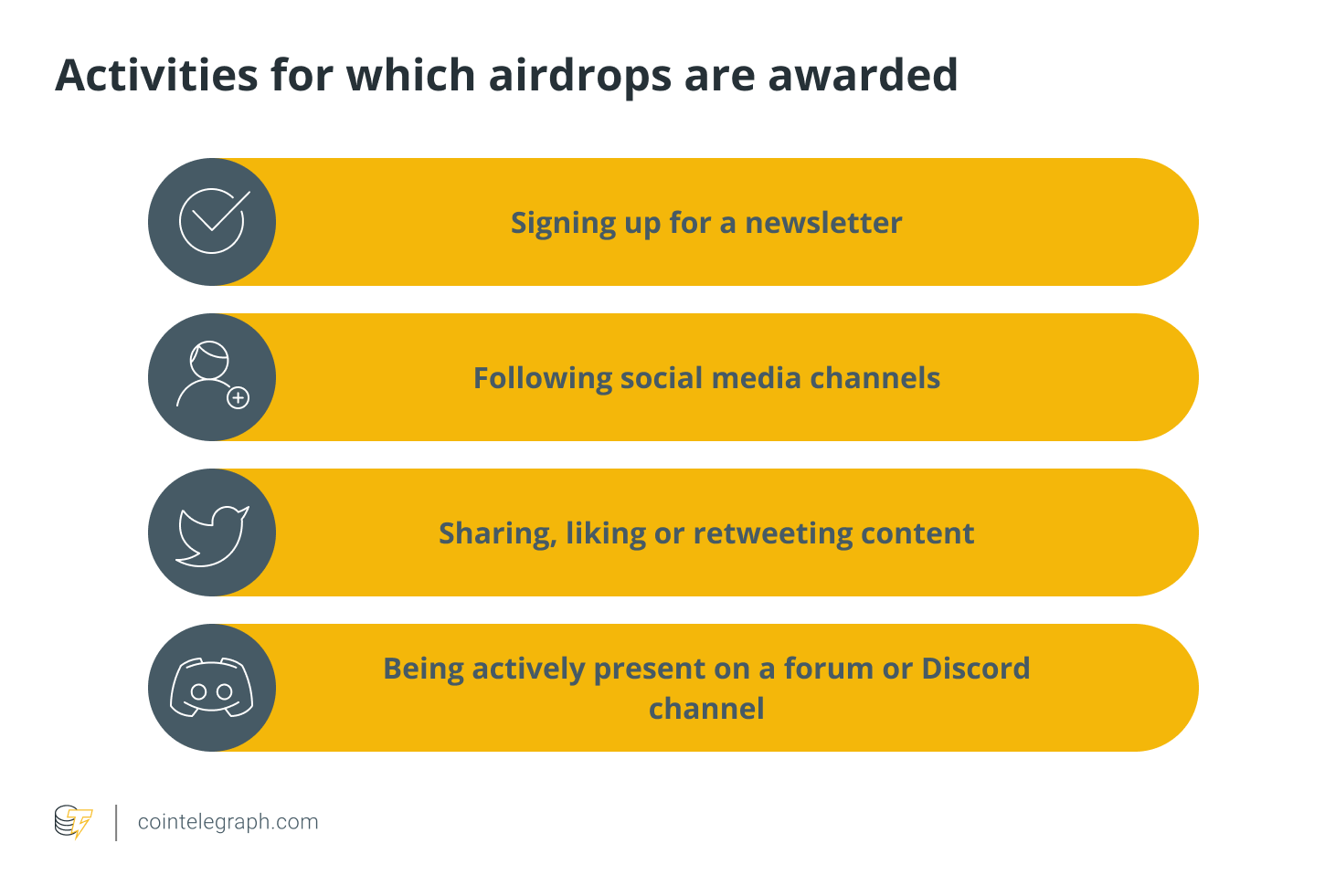Crypto airdrops often lose value quickly, with 88% dropping within three months due to hype-driven distributions and poor token utility. However, strategies like phased releases and targeted holder selection can help sustain long-term value by fostering genuine community engagement and liquidity management.
-
88% of airdropped tokens lose value within three months, based on seven years of data showing over $20 billion distributed since 2017.
-
Phased distribution and targeted engagement reduce sell-offs by rewarding active users.
-
88% value loss highlights the need for strong product-market fit, with successful cases like Hyperliquid emphasizing community involvement over venture capital.
Discover why 88% of crypto airdrops lose value fast and explore fixes like gradual unlocks. Learn expert insights on sustainable token strategies today.
What Are Crypto Airdrops and Why Do They Lose Value So Quickly?
Crypto airdrops are free distributions of tokens by blockchain projects to promote adoption and build communities, originating with Auroracoin in 2014 as an alternative to Bitcoin in Iceland. However, data from the past seven years indicates that a staggering 88% of these airdropped tokens lose significant value within three months, primarily due to immediate sell-offs from hype seekers rather than long-term holders. This pattern underscores the challenges in balancing initial excitement with sustainable token economics.
How Can Projects Select Better Holders to Prevent Airdrop Failures?
Effective airdrop success hinges on careful recipient selection to avoid “airdrop farming,” where users exploit distributions without genuine interest. According to a September 18 report by DappRadar analyst Sara Gherghelas, over $20 billion in airdrops have been issued since 2017, yet most fail due to this mismatch. Robert Hoogendoorn, head of content at DappRadar, emphasized in discussions that projects should analyze on-chain activity, trading history, and social media reputation to identify “diamond holders” committed to the ecosystem.

Source: DappRadar
Hoogendoorn noted that strategies like phased distributions, as seen in Optimism, or targeted allocations based on engagement limit rapid sell-offs. He added, “There’s not one success recipe, and it all comes down to distribution, product-market fit, and token utility.” General market trends also influence outcomes, but keeping communities engaged post-distribution is crucial for maintaining interest and value.
Crypto airdrops have evolved since their inception, becoming more prevalent during bull markets. Modern approaches incorporate on-chain verification, social campaigns, and liquidity incentives to ensure tokens reach dedicated users. Despite these advancements, the core issue remains: without rigorous vetting, distributions fuel short-term speculation over lasting adoption.

Airdrops are awarded through a variety of ways. Source: Cointelegraph
Projects are increasingly using reputation-based systems, such as integrating social media metrics or reward platforms, to allocate portions of airdrops more strategically. This shift helps mitigate exploitation and promotes ecosystems built on active participation rather than one-time gains.
Frequently Asked Questions
What Makes a Crypto Airdrop Successful in the Long Term?
A successful crypto airdrop prioritizes strong underlying protocols with real adoption and revenue generation, according to Jackson Denka, CEO of Azura, a DeFi platform supported by prominent investors. Even flawed structures can appreciate over time if tied to growing products, but poor fundamentals lead to inevitable declines. Data shows that 88% fail due to hype without substance, emphasizing the need for utility and community retention.
How Do Liquidity Issues Affect the Value of Airdropped Tokens?
Liquidity challenges in crypto airdrops often stem from rapid token releases that overwhelm markets, causing sharp price drops. Kanny Lee, CEO of SecondSwap, a platform for trading locked assets, explains that gradual unlock schedules and rewards for ongoing activity, as in recent successful cases, help sustain value by preventing floods of supply. This approach ensures tokens remain active longer, aligning with natural market absorption.
Key Takeaways
- High Failure Rate: 88% of crypto airdrops lose value within three months, driven by speculative farming and weak project fundamentals, per seven years of DappRadar data.
- Strategic Distribution: Phased releases and reputation-based selection, like in Hyperliquid’s 2024 launch, promote diamond holders and reduce sell pressure for better outcomes.
- Future Trends: Airdrops may decline as ICOs rise, but sustainable liquidity through staged unlocks will remain key to preserving value and engagement.
Conclusion
In summary, while crypto airdrops have distributed billions since 2017, their 88% value loss rate reveals critical flaws in distribution and liquidity management. Experts like Robert Hoogendoorn from DappRadar and Jackson Denka of Azura stress the importance of targeted holder selection and robust token utility to bridge hype and sustainability. As the industry matures, with innovations like gradual unlocks gaining traction, projects can evolve beyond temporary giveaways toward models that reward lasting participation, potentially reshaping token launches for enduring success. Stay informed on these developments through COINOTAG’s ongoing coverage.
Published: October 25, 2025 | Updated: October 25, 2025 | Author: COINOTAG






